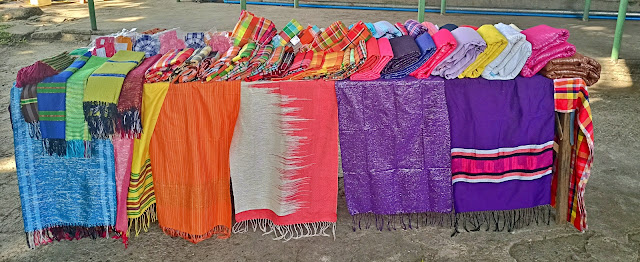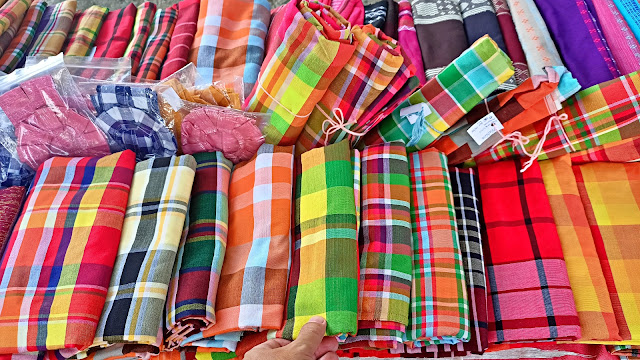As part of our Habi (weaving), Hilom (wellness) and Halal (cuisine) discovery tour of Panay Island organized by the Tourism Promotions Board of the Philippines (TPB), we visited a small community in the province of Iloilo where more than a century ago, a thriving weaving industry once existed and became forgotten but is now seeing signs of resurgence.
Upon arriving in Salngan in Oton, Iloilo, a group of mothers welcomed us with a morning snack comprised of several local sticky rice delicacies. It was here where we met the Chairman and Manager of the Salngan Livelihood Multi-Purpose Cooperative, Valerie Joyce Lozada and Elsie Balidiong.
During our conversation with the two ladies, I learned that "Hablon", which was derived from the Hiligaynon word "habol" meaning "to weave", is a hand-woven fabric made by the women of Panay for more than a century — particularly in the towns of Miag-ao, Oton, Duenas, Igbaras and Badiangon. However as the story goes, “In the town of Salngan in Oton, Iloilo, this weaving tradition skipped a few generations” Lozada told us in Tagalog. It was in the late 2000s when hablon weaving made a renaissance in their community. This happened shortly after the LGU traced the problem of malnutrition among children to mothers spending more time trading farm produce in the market than at home caring for their kids.
To solve the problem of malnourishment among the town’s younger inhabitants, the local government plotted of ways to keep the mothers at home while still able to earn a living. An idea to re-introduce Hablon weaving was pitched.
Not long after, Salngan Livelihood Multi-Purpose Cooperative was set up in 2005 that trained mothers the art of hablon weaving right in the confines of their home. Hitting two birds with one stone, the town of Salngan slowly curved underfeeding among children as the mothers started having more time taking care of them and on the other hand, the program was also able to resurrect the Panay tradition of 'hablon' weaving in their community.
If most of the world’s workforce were introduced to the “work from home” concept, In Salngan, there was already a 'weave from home' set-up in place for almost twenty years now. Originally made from several materials like pineapple fiber (piña), banana fibers (jusi) and cotton, hablon weaving has included the use of rayon thread to meet wide commercial demand.
Since then, the community became well-known for their hablon creations and started fielding orders from all over the country. They used to create and supply the 'sablay' used by the University of the Philippines during their graduation rites until it ceased during the pandemic. The lockdown really hit the community weavers hard as market demand went down. Today, the 35 women hablon weavers of the cooperative can only hope for a future as vibrant as their creations. After making a strong revival almost two decades ago, the Hablon weavers of Salngan is once again facing a long road to revitalization.
With the support of the public, thy will be done. So, if anyone is interested to see their creations: shawls, patadyongs, throw pillows, handkerchiefs, scarves, table cloth and runners, barong, sarong, coin purses, bags, bed sheets and even a laptop case, just check out their FB page. Salngan Livelihood Multi- Purpose Cooperative to order.





























